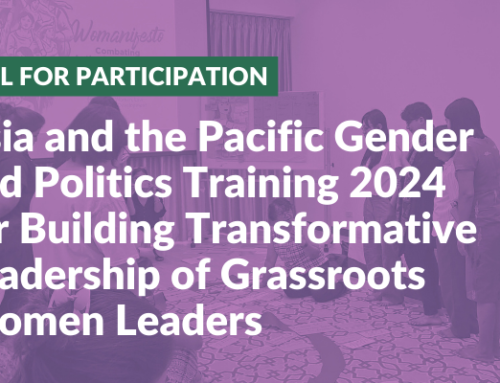
by Robert Baird
Excerpted from the Asian Correspondent
High-level meetings like today’s UN Climate Summit in New York are often derided as a bureaucratic talkshop. Each one involves a different set of anointed experts, hand-pressing politicians and scatterings of bleary-eyed activists discussing a different issue. Motions are passed, the applause is prompted and the protestors outside sidestepped. And when the canapes are gone, and the final session wraps up, everyone returns home, usually to prepare for the next high-level meeting.
But when Alina Saba leaves the Climate Summit this week, she’ll be returning to a community in Nepal that deals with the consequences of that political inertia every day.
Saba is one of the few voices from communities on the frontline of climate change chosen to speak at the summit. The 27-year-old researcher and climate activist works with of some of those most vulnerable to the effects of climate change: women, indigenous peoples, and those from poor or remote communities. She says she wants to remind delegates of the core injustice of climate change: the countries least responsible for the problem will suffer the most from its effects.
“My aim at this Summit is to give a clear picture of what’s happening on the ground in these developing countries. Why is it so disconnected? I think it’s important to give a clearer picture through my experience,” she said.
The Climate Summit, organised by UN Secretary General Ban Ki Moon, is not part of the formal negotiation process for a new climate change treaty. Instead, it aims to “raise political will and mobilize action” towards a new global agreement by the end of 2015.
Saba and three other speakers from civil society groups were drawn from an open application process that attracted more than 500 entrants. This is her first time in New York – indeed, her first time anywhere outside of Asia – and the contrast is striking.
“I’ve arrived in a country [the United States] where the wealth and consumption is beyond anything I could imagine,” she said.
As a researcher with the “tiny, very grassroots” NGO, the Mugal Women’s Upliftment Institute, Saba works with an indigenous community in midwestern Nepal already feeling the impact of a changing climate. The Mugu district is one of the least developed and most isolated in Nepal, lacking in health, fresh water, electricity and even road infrastructure. Successive crop failures have led to an acute food crisis for several years.
“They own very little, they live on very little, and yet they are carrying the burden of climate change,” she said.
….
Landslides are common in the mountainous regions of Nepal during the June-September rainy season, but are being exacerbated by melting glacial ice. They have destroyed crops in the Mangri village prior to harvest for the past five years, Saba says, which was not even reported to authorities due to the village’s isolation and lack of services. Saba says that when these poor indigenous people lose their crops and land, they have few survival options.
“If climate change effects [are felt] in New York, there are so many facilities, you can take care of things. But if it happens in Mugu, they have to walk as long as five hours, or one day just to report [it],” she said.
“What happens if the whole village is swept away? It may take as long as two days for people to know about it.”
The total glacier area and ice reserves in Nepal shrank by almost a third in the last three decades, according to a recent report by the International Centre for Integrated Mountain Development.
While the Climate Summit and international climate negotiations continue in the coming months, the effects of climate change will continue to be acutely felt in communities like Mangri village. Whether or not governments muster the political will to address these impacts is less predictable.





